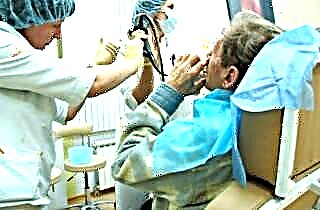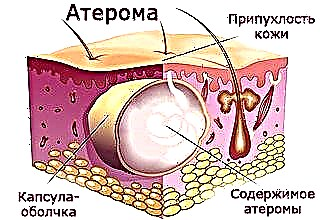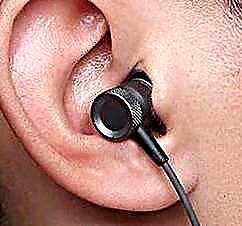With a disease such as bronchitis, deep damage to the respiratory tract occurs, and the damaged mucous membrane takes time to recover. It depends on how strong a person's immunity is, and how quickly the body is able to get rid of bacteria, viruses, toxins and dead cells. Therefore, it is not surprising that almost 50% of people who have had bronchitis may have its symptoms for some time. But here it is important to determine that it is the residual cough after bronchitis that is observed, and not a symptom of a new disease.
Distinctive features
 One of the main signs of residual cough after bronchitis is the absence of wheezing in the lungs. In addition, it is noted:
One of the main signs of residual cough after bronchitis is the absence of wheezing in the lungs. In addition, it is noted:
- lack of intoxication;
- normal temperature;
- weak cough and no phlegm;
- with each passing day, attacks become less frequent and weaker.
Bronchospasm may remain for 2-3 weeks, but no more.
If there are residual effects after an illness in a child, he is usually discharged to kindergarten or school, since the acute period with viruses and bacteria has passed. Anxiety should be caused by a dry and obsessive cough, the attacks of which occur over a longer period. In this case, the examination most often reveals whooping cough, which requires special treatment.
A prolonged and severe cough after bronchitis in adults is often observed against the background of smoking, since the mucous membrane continues to be irritated, the load on the respiratory organs remains large. Therefore, it is not surprising that smokers develop a new disease in the form of complicated bronchitis. This is evidenced by shortness of breath, fever, purulent sputum secretion.
If the cough does not disappear for a long time, it is necessary to be examined to find its cause. This is especially important for the child, since the child's body needs more strength to recover, and his immune system may still not be able to cope with the stresses that have arisen during the disease.
Help is needed in a quick recovery from bronchitis and for pregnant women, as due to coughing there is a threat of miscarriage.
To exclude pathology
An adult or child who coughs for a long time should certainly undergo additional diagnostics. This is necessary in order to exclude pathology, and if a new disease is detected, to undergo treatment. The re-examination includes:
 auscultation or listening to sounds generated during the activity of internal organs;
auscultation or listening to sounds generated during the activity of internal organs;- radiography;
- bronchoscopy, during which the degree of bronchial patency is determined, the state of the mucous membrane of the trachea and bronchi;
- identification of allergies.
Each of the diagnostic methods helps to exclude the assumption of the development of the disease, and, if necessary, to clarify or make a new diagnosis. So, during auscultation, breathing sounds are examined, the ratio of the strength and quality of sounds during exhalation and inhalation is determined. With pathology, wheezing, crepitus, pleural friction may be found. In this case, the localization of noises, their variability under the influence of coughing, deep breaths and exhalations is specified.
In order to exclude or confirm allergies, scarification tests are done. They are needed when a person, cured of bronchitis, continues to suffer from bouts of dry cough. This method makes it possible to study the reaction to 40 different allergens simultaneously and to identify the causative agents of allergies. This or another diagnostic method helps to determine how to quickly get rid of a cough.
Why are mucolytics needed?
After bronchitis, as a rule, a moist cough remains, and the body just needs to be helped to get rid of the remaining phlegm. The most commonly prescribed mucolytics based on carbocisteine, which does not lead to excessive thinning of phlegm or "flooding the lungs". Such drugs are considered the safest and most effective, help to cure both an adult and a child, and can be included in therapy from the first days of illness. To improve coughing, the attending physician can prescribe the most common drug - "Mucolic" in the form of a 2% syrup, applicable to patients of any age.
 Other carbocysteine-based mucolytics are also popular. The course of treatment includes syrups "Libeksin Muko", "Carbocisteine", preparations "Mukodin" (capsules for adults and syrup for children), "Fluifort" (granules for adults and syrup for children). Combined drugs are also prescribed. They are more suitable for patients who need to transfer a dry cough into a wet one, remove phlegm. Can be assigned "Sinekod", "Bronchicum", "Herbion" or "Stoptussin".
Other carbocysteine-based mucolytics are also popular. The course of treatment includes syrups "Libeksin Muko", "Carbocisteine", preparations "Mukodin" (capsules for adults and syrup for children), "Fluifort" (granules for adults and syrup for children). Combined drugs are also prescribed. They are more suitable for patients who need to transfer a dry cough into a wet one, remove phlegm. Can be assigned "Sinekod", "Bronchicum", "Herbion" or "Stoptussin".
It is also necessary to know that mucolytics, which contain carbocisteine, are contraindicated in people who are allergic to it. You can not take them for peptic ulcer disease, impaired renal function, during pregnancy and lactation. In addition, preparations in the form of capsules are contraindicated in children under 12 years of age, and syrups - up to 2 years.
Even if you do not have contraindications to the drug, you should be prepared for its side effects in the form of allergies and indigestion. To reduce the risk of adverse reactions, you must strictly follow the doctor's recommendations, follow the dosage indicated in the instructions.
In support of mainstream treatment
Doctors often recommend combining medication with traditional methods and remedies. In many folk recipes, one of the components is milk, which, for example, is recommended to be drunk with honey. However, you can find a recipe that works for people with lactose intolerance. So, you should take 8 dried figs, pour a glass of water and boil over low heat for 25-30 minutes, then add one at a time  a glass of water and sugar, warm until the sugar melts, add the juice of 1/2 lemon and 1 teaspoon of grated ginger. Take a decoction of 100 ml three times a day before meals.
a glass of water and sugar, warm until the sugar melts, add the juice of 1/2 lemon and 1 teaspoon of grated ginger. Take a decoction of 100 ml three times a day before meals.
Helps get rid of the residual effects of bronchitis and a mixture of radish and carrot juice. In 120 ml of juice you need to add 1 tablespoon of lime honey, stir and leave the drink so that the honey dissolves. The remedy is drunk in one tablespoon at short intervals for an hour.
In the national pharmacy, recipes are collected, according to which you can prepare not only useful, but tasty products, which is especially important for children. One of these drugs is a decoction of figs, which has anti-inflammatory and diaphoretic properties, which helps to strengthen the immune system. You will need one fruit and one and a half glasses of fat milk (at least 3.2%), and the figs can be in any form - fresh, dried or dried, since its properties are preserved. The figs are poured with milk and boiled under a lid over low heat for at least 30 minutes, then the dishes with the broth are wrapped in a blanket and allowed to brew until the drink cools down. They drink it half a glass before meals, the fruits are also eaten. This medicine can be taken by both children and pregnant women, but it is contraindicated in diabetes.
Folk remedies are irreplaceable during pregnancy. In this case, a mixture of one part of honey, one part of grated apple and two parts of ground onion is considered effective and safe. This medicine can be used 6 times a day, and a single serving is 1 tablespoon.
Inhalations based on medicinal herbs with an expectorant effect are also recommended: chamomile, linden, St. John's wort. But here it must be borne in mind that it is categorically impossible to use oregano in all trimesters of pregnancy. You can speed up the healing process with the help of tea based on linden, viburnum, raspberry, currant.
 Treatment with medications and folk remedies will be more effective if you adhere to certain rules. Since after the illness the mucous membrane remains inflamed and susceptible to various infections, caution should be exercised.
Treatment with medications and folk remedies will be more effective if you adhere to certain rules. Since after the illness the mucous membrane remains inflamed and susceptible to various infections, caution should be exercised.
Recommended:
- keep the body warm and prevent hypothermia;
- drink a lot of warm drinks;
- refuse too spicy and salty foods;
- avoid smokers and smoky premises;
- introduce more fresh vegetables and fruits into the diet.
In addition, one should not forget about the need to regularly ventilate the room, do wet cleaning, and walk more in the fresh air.

 auscultation or listening to sounds generated during the activity of internal organs;
auscultation or listening to sounds generated during the activity of internal organs;

